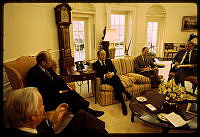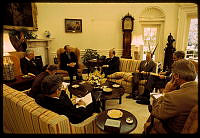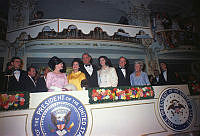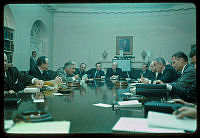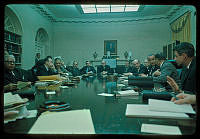Inaugural Ball for the Second Inauguration of President Lyndon B. Johnson
This photograph of an inaugural ball for President Lyndon B. Johnson was taken by Yoichi R. Okamoto on January 20, 1965. Following President Johnson's second inauguration, inaugural balls were held at the National Guard Armory and four Washington, D.C. hotels: the Mayflower, Sheraton-Park, Shoreham, and Statler-Hilton. Pictured here from left to right: Luci Baines Johnson (wearing a pink gown), First Lady Lady Bird Johnson, President Lyndon B. Johnson, Lynda Bird Johnson, Vice President Hubert H. Humphrey, Muriel Humphrey.

